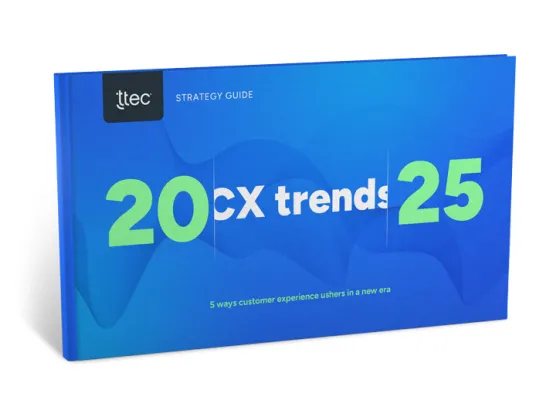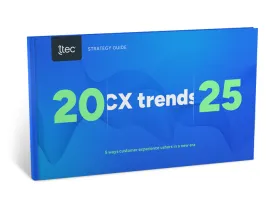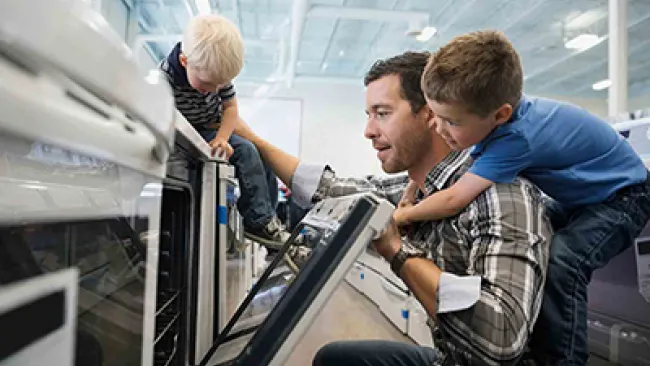Businesses in every industry are continuing to deal with the effects of COVID-19. With many previous predictions on the economy now registered moot, experts are now weighing on what it means to deliver relevant customer experiences.
Forrester’s 2020 US Customer Experience Index Report captured the early effects of the pandemic that reflect experiences across the globe. This glimpse at the early days of COVID-19’s reach helps paint a vital picture on how uncertainty can affect customer experience in Europe.
Here are some of the biggest takeaways highlighted from the report, which surveyed more than 97,000 customers across 250 brands and 14 industries from January through March in 2020.
Brands that invest in CX are winning
Leading this year’s list are USAA and Navy Federal Credit Union, which scored 83.9 and 82.4 respectively, ranking them at the top of credit card issuers and banks (multichannel) for a second year. The report said they were exceptionally suited to the ‘new normal’ brought on by the pandemic because of their ability to:
- Consistently meet customer’s needs. They are insightful enough to understand what people want from their brand.
- Understand and react to emotions. These brands know how to delight their customers and foster these moments into great experiences.
- Rebound from mistakes. A key factor in the ‘new normal’, these brands are have performed enough good acts to their customers that there is room for error as they reshape themselves post-COVID-19.
Organisations that led their industry in 2020 were:
- Airlines: Southwest Airlines (73.5)
- Auto manufacturers (luxury): Lexus (78.6)
- Auto manufacturers (mass market): Subaru (76.6)
- Banks (direct): USAA (78.6)
- Banks (multichannel): Navy Federal Credit Union (82.4)
- Credit card issuers: USAA (83.9)
- Federal government: National Park Service (77.2)
- Health Insurers: Florida Blue (72.1)
- Hotels: Hampton by Hilton (77.5)
- Investment firms: Edward Jones (77.6)
- Retailers (digital): Zappos.com (79.3)
- Retailers (multichannel): Trader Joe’s (80.7)
- Utilities: SRP (70.6)
Brands also saw a slight increase in CX satisfaction this year. The number of brands that scored “Good” (score of 75 to 84) jumped from 17% in 2019 to 20% in 2020, the highest in the last five years. Meanwhile brands who ranked “Poor” (score 55 to 64) dropped from 16% to 13% since last year.
Several brands that made the leap from “OK”, (score of 65-74) to “Good” included GEICO, Nationwide Mutual Insurance, and Lincoln.
Overall, multichannel retailers saw the biggest jump from ‘OK’ to ‘Good’ as seven brands: Kroger, Kohl’s, Petco, Ulta Beauty, Sephora, ALDI and Costco Wholesale improved their scores.
Hotels and multichannel banks also had several brands move into the ‘Good’ category some of which were: Courtyard by Marriott, Holiday Inn Express, Chase and U.S. Bank.
For a third year in a row, however, no brands where ranked “Excellent” (score 85 to 100).
Emotional connections remain essential
When we previously reported on Forrester’s annual US Customer Experience Index Report, we wrote that ‘customer experience is a never ending-journey.’ Customer expectations evolve, technology changes, and new ways to communicate emerge, but the need for human connection stays the same.
This year, it’s especially important due to how much has changed since the pandemic began. Feelings of happiness and value connect customers to a brand. A majority 76% of this year’s respondents who feel appreciated by brands will continue their relationship with the business, while 80% say they will spend more.
Likewise, as customers demand more empathy, they will continue to have a lower tolerance for negative interactions. Only 18% of customers who said they were disappointed by a brand will keep continuing business with them.
“To emerge successfully from this global crisis, brands must build experiences that help them engage with their customers at an emotional level”, said Sharyn Leaver, SVP of Research at Forrester in a statement about the 2020 report. “Brands can build a well of CX equity if they embrace a disciplined approach to envisioning, designing, and delivering a consistently high-quality experience. When consumer spending resumes, brands with experiences that engender customer loyalty will benefit the most”.














